The Dalmatian coast is a 200 miles (322 km) long stretch of the Croatian coast, stretching from Zadar to Dubrovnik. The charming old towns that made this region famous owes its origins to the many Mediterranean lands, including Venice and Greece.
The ancient cities of Croatia offer some of the best views of the Adriatic. In the old cities there are towering cathedrals, sprawling settlements, colossal walls and winding romantic streets.
Each destination, however, has a special flair. Some reflect the Venetian influence, others offer a variety of modern cafes and bars, while others are quiet and romantic. Whatever your taste, you will find it in the old cities of the Dalmatian coast.
In the following I would like to introduce you to 5 of these Dalmatian old towns which you should not miss during your visit to Dalmatia.
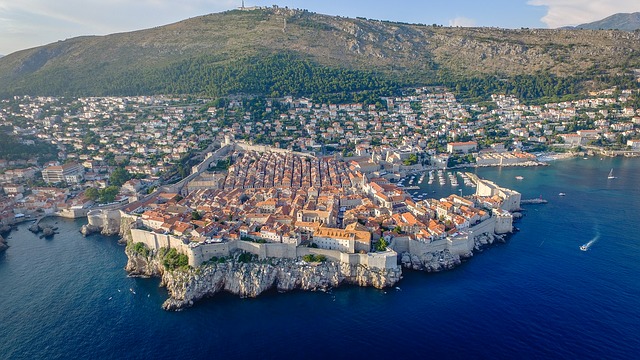 Dubrovnik, also known as "The Pearl of the Adriatic", is the most visited Dalmatian old town in Croatia. Dubrovnik was founded in the 13th century and developed under Venetian rule into an important seaport in the Mediterranean.
The old town of Dubrovnik is located in a basin surrounded by the world famous 8m high walls. The best time to go for a walk is in the morning, before the sun gets too strong. The hike can take more than two hours, with stopovers for pictures and refreshments in local bars and restaurants.
As soon as you leave the tourist roads, you will see the flower-filled side streets of the old town. In these side streets you can experience the daily life of the inhabitants of Dubrovnik first hand.
Outside the city walls you will find stalls to escape the heat of the city.
If you decide to visit Dubrovnik, Villsy has a wide range of villas with pools for you to enjoy. With Villsy your wonderful vacation in Croatia will be a guaranteed success!
Dubrovnik, also known as "The Pearl of the Adriatic", is the most visited Dalmatian old town in Croatia. Dubrovnik was founded in the 13th century and developed under Venetian rule into an important seaport in the Mediterranean.
The old town of Dubrovnik is located in a basin surrounded by the world famous 8m high walls. The best time to go for a walk is in the morning, before the sun gets too strong. The hike can take more than two hours, with stopovers for pictures and refreshments in local bars and restaurants.
As soon as you leave the tourist roads, you will see the flower-filled side streets of the old town. In these side streets you can experience the daily life of the inhabitants of Dubrovnik first hand.
Outside the city walls you will find stalls to escape the heat of the city.
If you decide to visit Dubrovnik, Villsy has a wide range of villas with pools for you to enjoy. With Villsy your wonderful vacation in Croatia will be a guaranteed success!
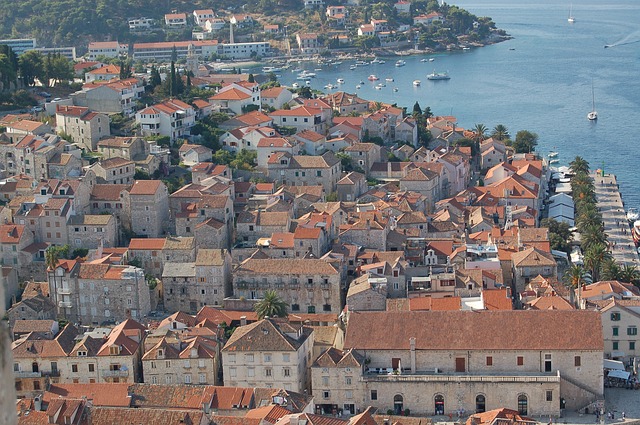 Hvar is the longest of the Croatian islands and is just a short ferry ride from Split. The Hvar culture, inhabited since prehistoric times, is based on the sea. The city was once a naval base of the Venetian Empire, whose influence can still be seen along the Croatian coast.
The old town of Hvar offers some of the best climatic, gastronomic and natural features of Croatia. One of the city's most famous attractions is St. Stephen's Cathedral; a masterpiece of the Renaissance. The Summer Musical Festival is a must if you travel at this time. You should not miss a visit to the wine regions.
Hvar is the longest of the Croatian islands and is just a short ferry ride from Split. The Hvar culture, inhabited since prehistoric times, is based on the sea. The city was once a naval base of the Venetian Empire, whose influence can still be seen along the Croatian coast.
The old town of Hvar offers some of the best climatic, gastronomic and natural features of Croatia. One of the city's most famous attractions is St. Stephen's Cathedral; a masterpiece of the Renaissance. The Summer Musical Festival is a must if you travel at this time. You should not miss a visit to the wine regions.
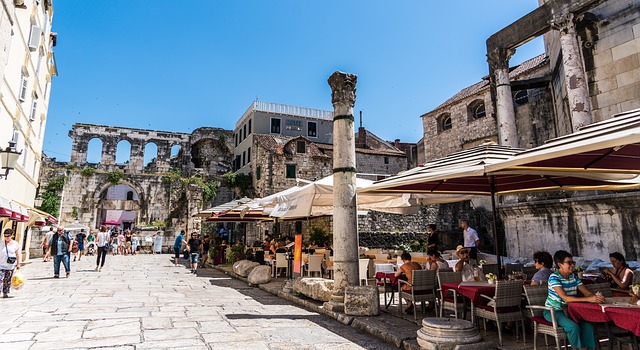 Split is the largest city in Dalmatia and the starting point for many island cruises. Split, one of the largest cruise and sea ports in Croatia, attracts countless visitors every year.
The Old Town of Split is a sprawling maze of small cobblestone streets and restaurants.
From the stairs of the cathedral of St. Domnius you can watch the passing tourists. Better yet you visit one of the many cafes.
Do not forget Diocletian's palace. Built for the Roman emperor of the same name, this palace is more like a fortress, as it is the largest part of the old town. At that time, many of the buildings in the old town were used as garrisons or outposts.
Split is the largest city in Dalmatia and the starting point for many island cruises. Split, one of the largest cruise and sea ports in Croatia, attracts countless visitors every year.
The Old Town of Split is a sprawling maze of small cobblestone streets and restaurants.
From the stairs of the cathedral of St. Domnius you can watch the passing tourists. Better yet you visit one of the many cafes.
Do not forget Diocletian's palace. Built for the Roman emperor of the same name, this palace is more like a fortress, as it is the largest part of the old town. At that time, many of the buildings in the old town were used as garrisons or outposts.
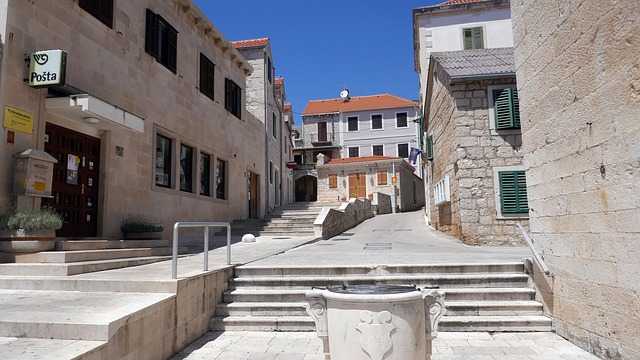 Bol is located in the southern part of the island of Brac and is the oldest city on the coast of Brac. This small town stretching over 10 km was founded a long time ago. The reason for this was the wide pebble and sandy beaches and the drinking water sources, which made Brac an exceptional tourist oasis.
Above Bol rise the hills of Bols; the Illyrian fortress Kostilo (660 m) and the Vidova gora (778 m), the highest peak of the Adriatic islands. Bol is only 15 km away from the international tourist and sport airport "Brac". Connections to the coast and ferries are quickly reached.
This little town has always preserved its Mediterranean spirit. The narrow, stony little streets and the wide squares are typically Mediterranean.
Bol is located in the southern part of the island of Brac and is the oldest city on the coast of Brac. This small town stretching over 10 km was founded a long time ago. The reason for this was the wide pebble and sandy beaches and the drinking water sources, which made Brac an exceptional tourist oasis.
Above Bol rise the hills of Bols; the Illyrian fortress Kostilo (660 m) and the Vidova gora (778 m), the highest peak of the Adriatic islands. Bol is only 15 km away from the international tourist and sport airport "Brac". Connections to the coast and ferries are quickly reached.
This little town has always preserved its Mediterranean spirit. The narrow, stony little streets and the wide squares are typically Mediterranean.
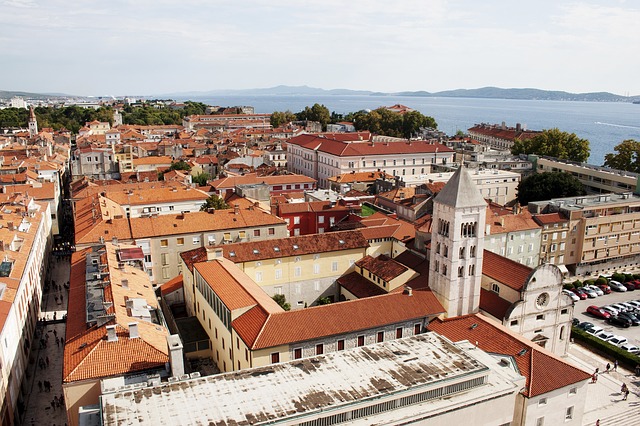 The city wall of Zadar was once the largest city fortress in the whole of the Republic of Venice and made it possible to preserve more independence than most neighboring cities. It was never conquered by the Turks. At that time there were many more fortifications. What had been preserved, however, is now used for parks and promenades. Not for nothing Zadar is considered to be the "coolest" city in Croatia. Here you can even visit the old military rooms.
On the bastion above the bridge gate is a promenade called Muraj - a peaceful vantage point across the opposite mainland.
Throughout the long history of Zadar the city wall was pierced again and again. Some of them have been walled up forever, others, however, still serve as important connections between the city within the walls and the sea beyond.
Some parts of the walls were already built in the Middle Ages, while others were built by the Venetians much later than fortress against the Turks. Today, only parts of the walls and eight gates have been preserved.
author: Villsy
Date: 5.11.2019.
The city wall of Zadar was once the largest city fortress in the whole of the Republic of Venice and made it possible to preserve more independence than most neighboring cities. It was never conquered by the Turks. At that time there were many more fortifications. What had been preserved, however, is now used for parks and promenades. Not for nothing Zadar is considered to be the "coolest" city in Croatia. Here you can even visit the old military rooms.
On the bastion above the bridge gate is a promenade called Muraj - a peaceful vantage point across the opposite mainland.
Throughout the long history of Zadar the city wall was pierced again and again. Some of them have been walled up forever, others, however, still serve as important connections between the city within the walls and the sea beyond.
Some parts of the walls were already built in the Middle Ages, while others were built by the Venetians much later than fortress against the Turks. Today, only parts of the walls and eight gates have been preserved.
author: Villsy
Date: 5.11.2019.
Dubrovnik
 Dubrovnik, also known as "The Pearl of the Adriatic", is the most visited Dalmatian old town in Croatia. Dubrovnik was founded in the 13th century and developed under Venetian rule into an important seaport in the Mediterranean.
The old town of Dubrovnik is located in a basin surrounded by the world famous 8m high walls. The best time to go for a walk is in the morning, before the sun gets too strong. The hike can take more than two hours, with stopovers for pictures and refreshments in local bars and restaurants.
As soon as you leave the tourist roads, you will see the flower-filled side streets of the old town. In these side streets you can experience the daily life of the inhabitants of Dubrovnik first hand.
Outside the city walls you will find stalls to escape the heat of the city.
If you decide to visit Dubrovnik, Villsy has a wide range of villas with pools for you to enjoy. With Villsy your wonderful vacation in Croatia will be a guaranteed success!
Dubrovnik, also known as "The Pearl of the Adriatic", is the most visited Dalmatian old town in Croatia. Dubrovnik was founded in the 13th century and developed under Venetian rule into an important seaport in the Mediterranean.
The old town of Dubrovnik is located in a basin surrounded by the world famous 8m high walls. The best time to go for a walk is in the morning, before the sun gets too strong. The hike can take more than two hours, with stopovers for pictures and refreshments in local bars and restaurants.
As soon as you leave the tourist roads, you will see the flower-filled side streets of the old town. In these side streets you can experience the daily life of the inhabitants of Dubrovnik first hand.
Outside the city walls you will find stalls to escape the heat of the city.
If you decide to visit Dubrovnik, Villsy has a wide range of villas with pools for you to enjoy. With Villsy your wonderful vacation in Croatia will be a guaranteed success!
Hvar
 Hvar is the longest of the Croatian islands and is just a short ferry ride from Split. The Hvar culture, inhabited since prehistoric times, is based on the sea. The city was once a naval base of the Venetian Empire, whose influence can still be seen along the Croatian coast.
The old town of Hvar offers some of the best climatic, gastronomic and natural features of Croatia. One of the city's most famous attractions is St. Stephen's Cathedral; a masterpiece of the Renaissance. The Summer Musical Festival is a must if you travel at this time. You should not miss a visit to the wine regions.
Hvar is the longest of the Croatian islands and is just a short ferry ride from Split. The Hvar culture, inhabited since prehistoric times, is based on the sea. The city was once a naval base of the Venetian Empire, whose influence can still be seen along the Croatian coast.
The old town of Hvar offers some of the best climatic, gastronomic and natural features of Croatia. One of the city's most famous attractions is St. Stephen's Cathedral; a masterpiece of the Renaissance. The Summer Musical Festival is a must if you travel at this time. You should not miss a visit to the wine regions.
Split Old Town
 Split is the largest city in Dalmatia and the starting point for many island cruises. Split, one of the largest cruise and sea ports in Croatia, attracts countless visitors every year.
The Old Town of Split is a sprawling maze of small cobblestone streets and restaurants.
From the stairs of the cathedral of St. Domnius you can watch the passing tourists. Better yet you visit one of the many cafes.
Do not forget Diocletian's palace. Built for the Roman emperor of the same name, this palace is more like a fortress, as it is the largest part of the old town. At that time, many of the buildings in the old town were used as garrisons or outposts.
Split is the largest city in Dalmatia and the starting point for many island cruises. Split, one of the largest cruise and sea ports in Croatia, attracts countless visitors every year.
The Old Town of Split is a sprawling maze of small cobblestone streets and restaurants.
From the stairs of the cathedral of St. Domnius you can watch the passing tourists. Better yet you visit one of the many cafes.
Do not forget Diocletian's palace. Built for the Roman emperor of the same name, this palace is more like a fortress, as it is the largest part of the old town. At that time, many of the buildings in the old town were used as garrisons or outposts.
Bol, island of Brac
 Bol is located in the southern part of the island of Brac and is the oldest city on the coast of Brac. This small town stretching over 10 km was founded a long time ago. The reason for this was the wide pebble and sandy beaches and the drinking water sources, which made Brac an exceptional tourist oasis.
Above Bol rise the hills of Bols; the Illyrian fortress Kostilo (660 m) and the Vidova gora (778 m), the highest peak of the Adriatic islands. Bol is only 15 km away from the international tourist and sport airport "Brac". Connections to the coast and ferries are quickly reached.
This little town has always preserved its Mediterranean spirit. The narrow, stony little streets and the wide squares are typically Mediterranean.
Bol is located in the southern part of the island of Brac and is the oldest city on the coast of Brac. This small town stretching over 10 km was founded a long time ago. The reason for this was the wide pebble and sandy beaches and the drinking water sources, which made Brac an exceptional tourist oasis.
Above Bol rise the hills of Bols; the Illyrian fortress Kostilo (660 m) and the Vidova gora (778 m), the highest peak of the Adriatic islands. Bol is only 15 km away from the international tourist and sport airport "Brac". Connections to the coast and ferries are quickly reached.
This little town has always preserved its Mediterranean spirit. The narrow, stony little streets and the wide squares are typically Mediterranean.
Korcula
Source: Tamás Marosi The old town of Korcula is a medieval, walled city located on an oval promontory that points deep into the Peljesac Channel. The city itself is criss-crossed by narrow streets. This "herringbone shape" was used in the design of the old town of Korcula to reduce the effects of wind and sun and to provide citizens with sheltered and comfortable accommodation. The architecture of the old town is influenced mainly by the Venetian Renaissance. Although, outside the old town in the bay of Luka Korculanska (Kalac) you can also see some fine examples of architecture of the 1930s. The main road runs from north to south and divides the elliptical old town into two equal parts. The side streets from the west and east, which run along the coast, meet at the main square on the hill of the old town of Korcula, where you can also find Trg Svetog Marka, and the Sveti Marko Cathedral.Zadar
 The city wall of Zadar was once the largest city fortress in the whole of the Republic of Venice and made it possible to preserve more independence than most neighboring cities. It was never conquered by the Turks. At that time there were many more fortifications. What had been preserved, however, is now used for parks and promenades. Not for nothing Zadar is considered to be the "coolest" city in Croatia. Here you can even visit the old military rooms.
On the bastion above the bridge gate is a promenade called Muraj - a peaceful vantage point across the opposite mainland.
Throughout the long history of Zadar the city wall was pierced again and again. Some of them have been walled up forever, others, however, still serve as important connections between the city within the walls and the sea beyond.
Some parts of the walls were already built in the Middle Ages, while others were built by the Venetians much later than fortress against the Turks. Today, only parts of the walls and eight gates have been preserved.
author: Villsy
Date: 5.11.2019.
The city wall of Zadar was once the largest city fortress in the whole of the Republic of Venice and made it possible to preserve more independence than most neighboring cities. It was never conquered by the Turks. At that time there were many more fortifications. What had been preserved, however, is now used for parks and promenades. Not for nothing Zadar is considered to be the "coolest" city in Croatia. Here you can even visit the old military rooms.
On the bastion above the bridge gate is a promenade called Muraj - a peaceful vantage point across the opposite mainland.
Throughout the long history of Zadar the city wall was pierced again and again. Some of them have been walled up forever, others, however, still serve as important connections between the city within the walls and the sea beyond.
Some parts of the walls were already built in the Middle Ages, while others were built by the Venetians much later than fortress against the Turks. Today, only parts of the walls and eight gates have been preserved.
author: Villsy
Date: 5.11.2019.